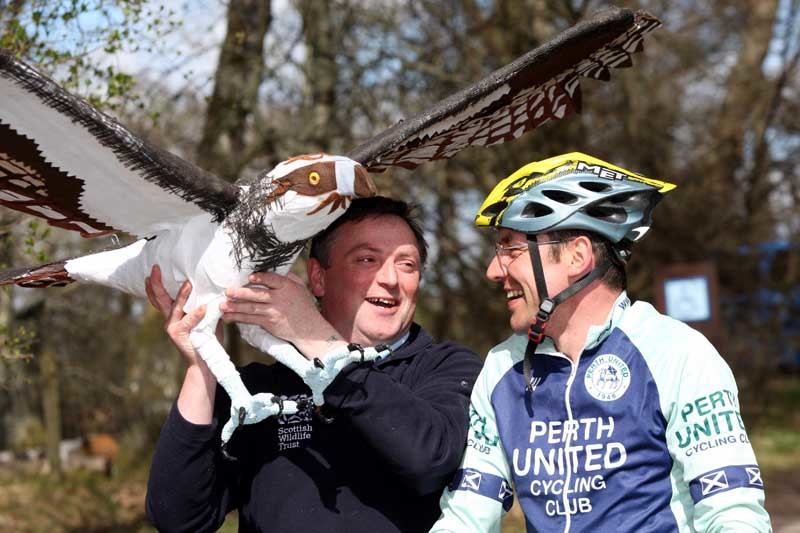One of the last mysteries surrounding Britain’s most famous feathered friends could be solved due to the fund-raising efforts of a Perthshire cyclist.
For 20 years in a row, the nation’s oldest osprey has been making the trip to Loch of the Lowes for the breeding season.
She travels an estimated 6000 miles every year from western Africa to Perthshire but the exact route taken remains shrouded in mystery.
Toby Green has determined to undertake a trip of a lifetime in a bid to fund satellite tagging for the famous bird’s latest chicks.
The 39-year-old, who lives close to Loch of the Lowes, will spend two weeks cycling over 1000 miles from Lands End to John O’Groats with the aim of raising £39,000.
The trip has been planned as the Scottish Wildlife Trust (SWT) launches a campaign to uncover details of the ospreys’ incredible migratory journey.
Toby, an SWT volunteer, knows he has set himself a tough challenge but insists it will be well worth it.
“The exact route travelled by the resident female and her chicks at Loch of the Lowes is one which remains a local mystery,” he said.
“I want to fund satellite tagging for the chicks which may hatch and fledge the nest this season.”
He continued, “This is one of the ultimate challenges for a cyclist to undertake in Britain.
“I aim to cycle at least 100 miles per day for 14 consecutive days and, unlike other organised cycles, I won’t have a support team behind me.
“I will be carrying all my equipment including my tent on my bike and I will be pushing myself to see how far my legs can take me.”
Although hard work, Toby insists the trip will be ultimately rewarding.Incredible journey”This will be an incredible journey, but nothing compared to the migration made annually by ospreys,” he continued.
“I am sure at the end of my ride I will be even more in awe of the amazing endurance of one of Scotland’s most incredible raptors.”
SWT Loch of the Lowes visitor centre manager Peter Ferns said, “Satellite tagging has the potential to unlock many secrets about the behaviour of our young ospreys.
“By tracking the route they take, an instinctive process determined from their hereditary programming, insight into the journey they take each year will also be gained.
“It is a safe and proven method of research, causing no harm to the animal.”
Tagging is not cheap but Mr Ferns believes it offers a rare opportunity to make numerous valuable discoveries.
“With satellite tagging we might also learn more about what causes an osprey to fail to return…and if there is a pattern in failed migrations,” he said.
“Luckily our female attracted another mate after her normal partner failed to return, but we still wonder what has happened to the original male.
“With more information, we might even be able to enhance our activities to protect these formidable rarities of our bird world.”
Following the return of the female osprey at Loch of the Lowes in March, three eggs have now been laid and are due to hatch towards the end of May.
Satellite tags cost £33,000 each and the SWT hopes to raise a minimum of £39,000 before any tagging begins.
To donate visit www.justgiving.com/Toby-Green.
